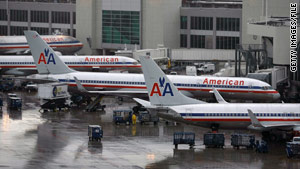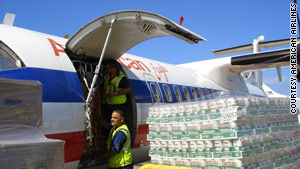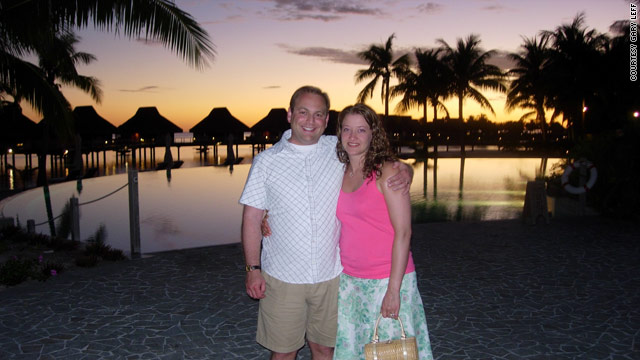Maybank IB: The company can reshape for a re-listing later
PETALING JAYA: Privatise Malaysia Airlines (MAS) but list Firefly, MAS Engineering, MasKargo and even its terminal services, suggested Maybank IB in a recent research report.
The research house in its report yesterday said the privatisation of MAS was not an outlandish idea and the shareholders may just warm up to the idea. More so since the analyst community had an overwhelming “sell” call on the carrier after the airline reported RM242mil in net loss for the first quarter ended March 31, 2011.
“MAS' poor performance stemmed from its lowest yields and highest cost position against its peers. Most of the root causes were legacy in nature, having inherited the oldest fleet and the ill effect of substantially under-invested in the business in the past.
“(However), there are merits to a privatisation, it provides a shelter away from further downside volatility in the share price, while the company reshapes itself up for a re-listing in the future years,'' the report said.

In the past many companies have been taken private for some years and later re-appear on the local house and this is the suggestion of Maybank IB. Among those companies that have been taken private for various reasons include PLUS Expressways Bhd, United Engineers Bhd, Mox Bhd, Astro, Palmco Bhd, Bumi Armada Bhd and Maxis Bhd. Thus far, Maxis has been re-listed and Bumi Armada is making its way back on the local bourse. Even the shareholders of AirAsia was once upon a time thinking of taking the carrier private.
But some analysts do not share Maybank IB's sentiments.
“MAS had gone through a lot of transformation programmes and going private means it is admitting defeat. That is not the kind of signals it should be sending to the market. With all these GLC open day and all the work that Tengku Datuk Azmil Zahruddin is doing to reshape MAS, we should allow it to remain listed.
“Today may be tough times for the carrier, but given time and the right strategy and its recent entry into oneworld global air alliance and the fact that it is buying new aircraft, MAS should be doing better next year onwards,'' an analyst from a foreign-based research house said.
However, she said, if “you look at it from the shareholder perspective and since the share price has tanked backed to the 1990s level, it is absolutely value destruction given all the equity calls. On paper the privatisation looks good but I still do not think it is the best way for MAS.''
An aviation analyst from Singapore who requested anonymity felt that “it (MAS) is not run like a government-controlled company and if the Government wants to sell the remaining stake, it is the Government's decision. Even if the Government feels it should sell, it may need to wait for market conditions to be right for such a sale.''
Maybank IB in its reports felt that the shareholders of MAS might warm up to the idea of a privatisation.
It said the principle shareholders of MAS were Khazanah Nasional Bhd (69%) and Employees Provident Fund (EPF) (11%) and both had acquired MAS at a substantially higher price.
Since MAS' stock performance has been disappointing and considering potential headwinds ahead, its parent Khazanah may consider privatising MAS as the stock is trading at its lowest historical price and valued at only 1.4x book. At the current share price, Khazanah needs to pay less than RM1.5bil for the remaining shares it does not own. If it teams up with EPF, like their partnership for the privatisation of PLUS, it will cost just RM962mil.
Maybank IB also agreed that MAS management was doing a lot of work to reshape the carrier. From the fleet perspective, it was making the “right approach to rejuvenate its fleet; it currently has the oldest fleet age in the region and more crucially it has many obsolete aircraft (B737-400, first generation A330). We expect the fleet age to fall rapidly in 2012-13 as MAS inducts 15-17 new aircraft. This will greatly enhance operational efficiency and reduce cost substantially.''
The report said a successful airline was all about having an efficient cost structure that could withstand the ups and downs of the aviation cycle.
“We also believe when MAS has a young and trendy fleet, it is no longer handicapped against its peers and instances where MAS lags the peer group will be an issue of the past,'' the report said.
Maybank IB said re-listing could extract more value and assuming that MAS was a privately-owned company seeking a re-listing, it could extract better valuation by fixing its operations to be sustainably profitable and “we think this can be achieved by 2012; wait for the next aviation up-cycle; and float pieces of the group as stand-alone companies.”
“For example, MAS can public list Firefly first as there is a strong appetite for low-cost carriers. This can be repeated for MAS Engineering, MasKargo and its terminal services,'' the report said.
The benefits of breaking up MAS were there and that was also something Singapore Airlines had done years ago for SIA Engineering, Tiger Airways and SATS.
MAS' share price rose eight sen to close at RM1.53 on Friday.







![[SB10001424052748704335904574495622113040760]](http://s.wsj.net/public/resources/images/OB-ES794_panamp_D_20091023193338.jpg)
![[PanAm Bag]](http://s.wsj.net/public/resources/images/HC-GO217_PanAmB_BV_20091025175257.gif)

